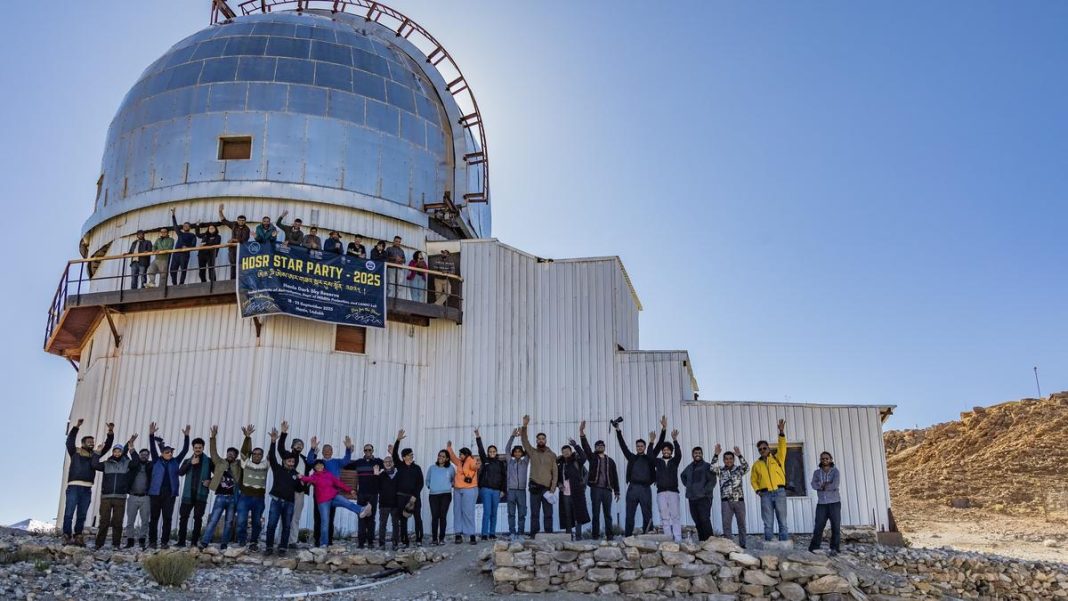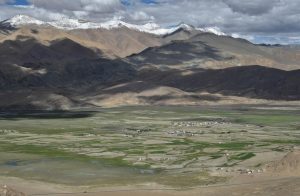Hanle: India’s First Dark Sky Reserve Transforms Himalayan Village
Hanle, a remote Himalayan village in Ladakh, has become India’s first official dark sky reserve, protecting its pristine Bortle-1 skies – the highest clarity rating possible. This initiative is creating new economic opportunities through astrotourism while preserving one of the world’s darkest observing sites.
Key Takeaways
- Hanle boasts Bortle-1 skies, the clearest possible for astronomical observation
- 25 local youth trained as Astronomy Ambassadors, 18 of them women
- Reserve attracted approximately 10,000 visitors in 2024
- Annual star parties bring enthusiasts together under pristine skies
World-Class Astronomical Location
The Hanle Dark Sky Reserve, located within the Changthang Wildlife Sanctuary, surrounds the Indian Astronomical Observatory operated by the Indian Institute of Astrophysics (IIA). The facility hosts multiple advanced telescopes including the Himalayan Chandra Telescope and GROWTH India Telescope.
“Countless clear sky nights, fewer atmospheric particles that absorb the celestial objects’ light, and low light pollution make Hanle an ideal location for astronomical observations,” said Dorje Angchuk, engineer-in-charge of the Observatory.
Combating Light Pollution
To preserve the dark skies, IIA has distributed lamp shades, blackout curtains, and warm-tone bulbs to all homes and infrastructure in Hanle. The institute has also trained 25 local youth as Astronomy Ambassadors, equipping them with telescopes and basic astronomy knowledge to lead night-sky tours for visitors.
The Star Party Experience
Since 2023, Hanle has hosted annual star parties, with the third edition taking place from September 18-23 this year. These gatherings bring together astronomy enthusiasts, astrophotographers, and stargazers for observation and education under exceptionally dark skies.
Amateur astronomer Ajay Talwar explained the unique viewing opportunities: “The skies in Hanle are so pristine that you can observe many elusive and exclusive phenomena not seen anywhere else.” These include:
- Zodiacal light: A faint glow during twilight hours along the Sun’s path
- Gegenschein: A luminous patch opposite the sun’s position
- Belt of Venus: A pink band of light visible in the evening sky
High-Altitude Challenges
Located at 4,250 meters above sea level, Hanle presents significant challenges for visitors. The IIA requires star party attendees to acclimatize in Leh for two days before proceeding to Hanle. Medical professionals conduct check-ups and nightly health monitoring due to the low oxygen levels and harsh conditions.
Economic Impact and Local Engagement
The dark sky reserve has become an economic boon for the local community. Rangdol Dorje, an Astronomy Ambassador since 2022, confirmed that tourism is thriving thanks to stargazing visitors.
During winter months when tourist numbers decline, the Astronomy Ambassadors tutor local schoolchildren. Padma Ishey teaches alternative courses combining astronomy and local culture, while he and filmmaker Anmol Tikoo work to preserve traditional knowledge by collecting stories, proverbs, and folk songs from elders.
Visitor Experiences and Future Plans
Participants at the star party reported transformative experiences. Rashmi Sheoran, an astronomy educator from Haryana, noted: “After seeing the planets with my own eyes, I found the view to be as good as or even better than pictures I had seen before.”
Future developments include a mini-planetarium and a transparent “Astroglobe” dome to accommodate tourists during harsh winter conditions. With the motto “come for the mountains, stay for the stars,” Hanle Dark Sky Reserve demonstrates how environmental preservation can benefit both science and local communities.





